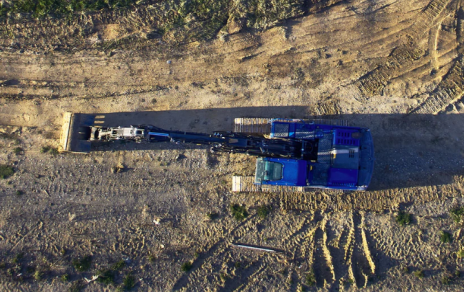Anglo-Australian miner Rio Tinto will cut output at its Yarwun alumina refinery in Queensland by 40% from next October to extend the plant’s life, the company said on Tuesday.
Rio made the decision after concluding building a second waste facility at Yarwun would require substantial investment that is not currently viable.
Cutting back output will extend the plant’s operations to 2035 by lowering the waste produced, with current waste facilities set to reach capacity in 2031, and allow for another four years for Rio to develop solutions that could extend Yarwun’s life, it said in a release.
The decision comes amid broader struggles for metals processing in Australia, where high power and labour costs have cut into margins. At the same time, Rio Tinto is contending with alumina prices that have sunk to two-year lows.
It also follows the start in August of new CEO Simon Trott’s company restructuring to focus on its most profitable assets.
“While we have extensively explored options to develop a second tailings facility for Yarwun over a number of years, the scale of investment required is substantial and not currently economically viable,” said Armando Torres, Rio Tinto Aluminium’s Pacific operations managing director.
Rio’s Pacific aluminum businesses include two bauxite mines, two alumina refineries, and two smelters in Australia and one in New Zealand. It also holds a majority stake in independently managed smelter Tomago, which it recently flagged is under review due to power costs.
“The broader thematic is that Australian (metals processing) is slowly being removed due to costs of production, energy prices, labour and capital intensity given low alumina prices,” said RBC analyst Kaan Peker in Sydney.
Against that backdrop it would be hard for Rio Tinto’s management to justify investment in another waste facility that could cost hundreds of millions of dollars, Peker said, adding that the scale-back would trim around 3% of alumina supply from the ex-China market.
The cut may support the price of alumina, which has dropped due to a rise in low cost Indonesian production. For bauxite, which is used to make alumina, Rio Tinto will need to decide whether to sell its excess production on the open market or reduce output at the Weipa mine which feeds Yarwun.
Rio Tinto said the production cut would reduce annual alumina output by about 1.2 million metric tons, without impacting customer requirements. The company reported 7.3 million tons of alumina output in 2024.
The scale-back will cut about 180 roles from Yarwun’s roughly 725-strong workforce. Its bauxite mines and aluminum smelters will continue to run at full capacity.
The announcement comes as smelters across Australia including Glencore’s Mount Isa copper smelter in Queensland, and Trafigura’s Port Pirie lead and zinc smelter in South Australia have received government support to stay open.
Local media have reported some uncertainty around the future of Rio Tinto’s Bell Bay aluminum smelter in Tasmania, which has secured a 12-month extension of its power contract with Hydro Tasmania while negotiations continue on a longer-term deal.
(By Roushni Nair and Melanie Burton; Editing by Leroy Leo and Christian Schmollinger)
